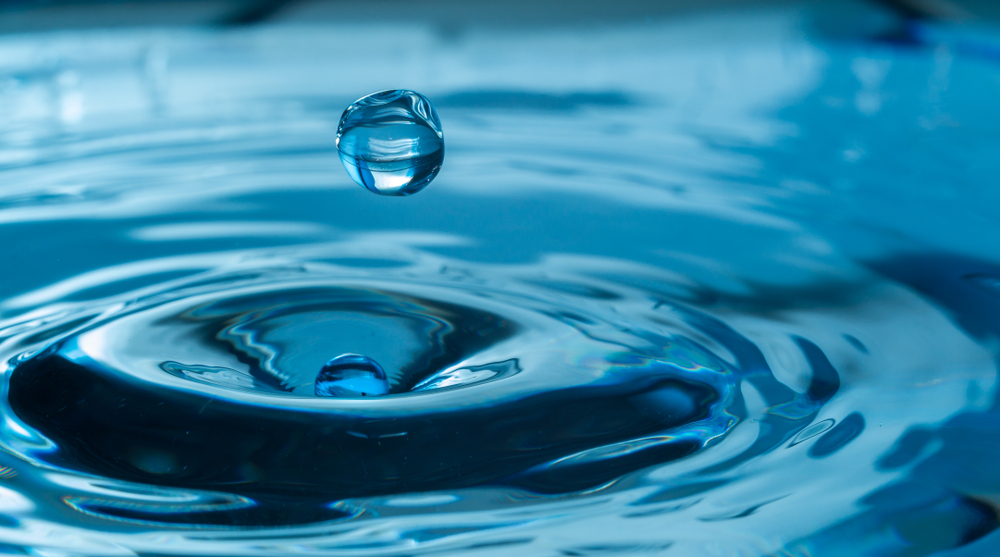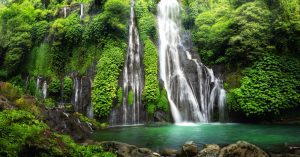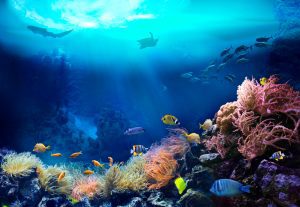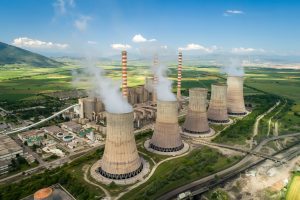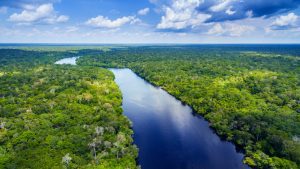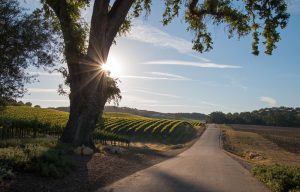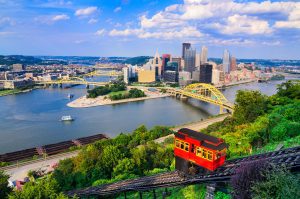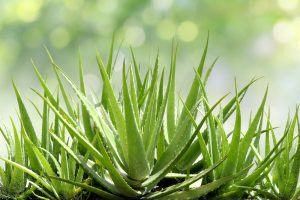Because water is not a living thing, water is abiotic. Abiotic means “not alive,” so water fits into the abiotic category.
Table of Contents
Abiotic vs. Biotic
The two main categories of an ecosystem are biotic and abiotic. The biotic category covers living things in an environment.
In contrast, abiotic components refer to all inanimate components such as temperature, pH, humidity, sunlight, and chemical agents (different gases, mineral nutrients, etc.) in the air, water, and soil.
Together, biotic and abiotic factors impact health and viability in an environment.
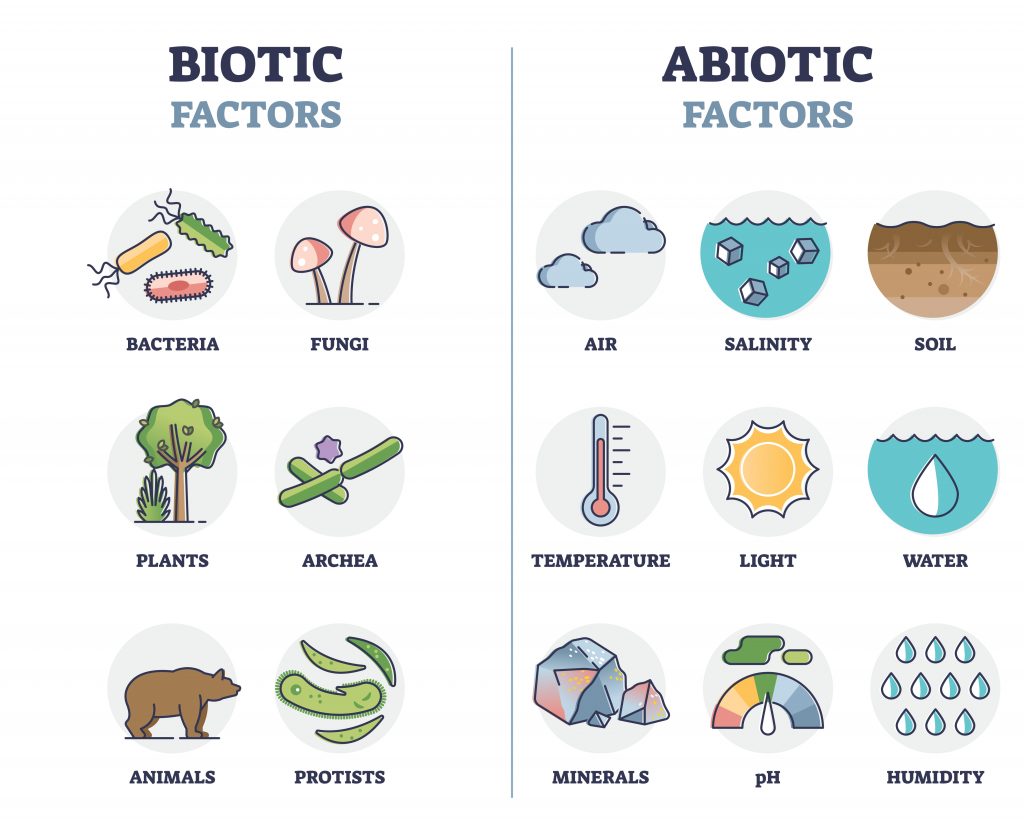
What does “biotic” mean?
Combining two terms, “bio”, which means life, and “tic”, which means like, creates the term “biotic”. The word “biotic” means life-like, and it refers to every living thing in an ecosystem.
What factors in a system are biotic?
All living creatures in an environment are affected by biotic factors. In turn, environments are affected by the presence of living things and their by-products.
All living organisms, including humans, animals, plants, fungi, and bacteria, are considered biotic factors. Interactions between biotic factors are essential for each species’ reproduction and fulfill their essential needs like food.
All living elements in an ecosystem are examples of biotic resources. These are decomposers, consumers, producers, and detritivores (organisms that feed off things left behind by other living creatures like carnivores and herbivores).
What does “abiotic” mean?
Abiotic is a term that refers to all inanimate elements in an ecosystem. The abiotic factors include land, water, and sunlight.
What factors in a system are abiotic?
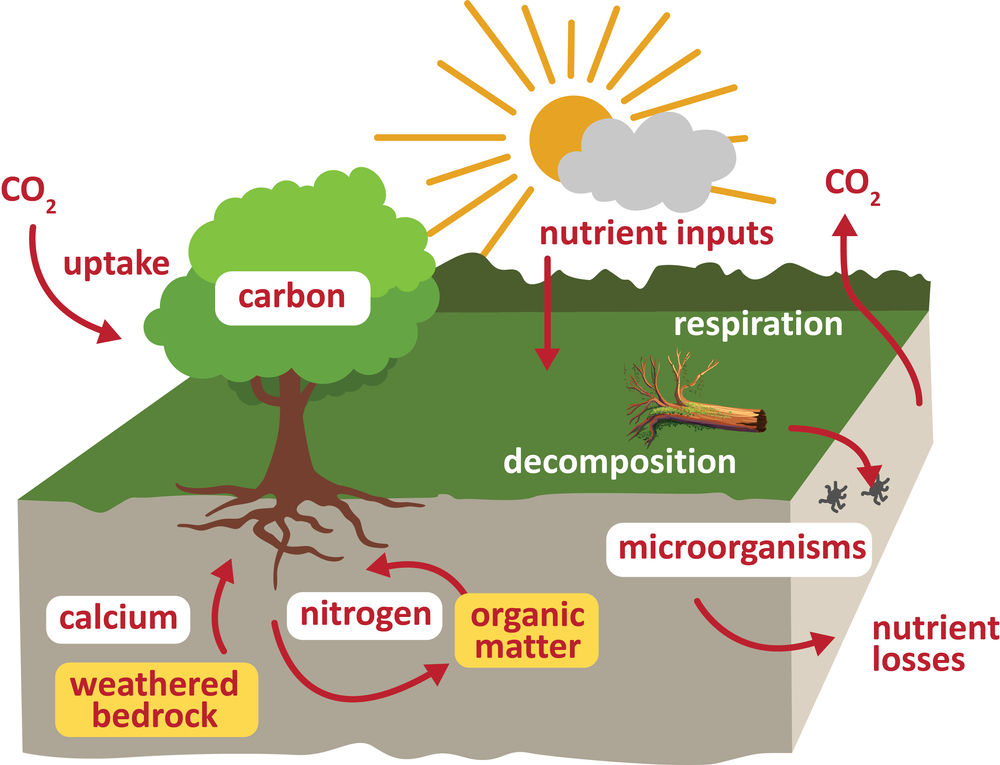
Inanimate things like chemical and physical factors in the atmosphere, hydrosphere, and lithosphere are abiotic. Abiotic factors include sunlight, rain, soil, minerals, and air.
These factors can have a major impact on the survival and reproduction of species within an ecosystem.
Autotrophic organisms (those which produce complex organic molecules from sunlight and simple compounds), for example, may not survive without adequate sunlight.
These organisms will eventually die and cause a shortage in food supply for primary consumers. This affects all organisms and spreads throughout the food chain. It causes an imbalance in the ecosystem.
Sample illustrations of abiotic factors
The type of ecosystem determines its abiotic components. Abiotic components in terrestrial ecosystems include the type of soil, soil pH level, altitude, humidity, air, temperature, water, and the weather.
Examples of abiotic components in an aquatic ecosystem are water salinity and oxygen levels, pH, water flow rate, depth, temperature, and water flow rate.
Ecological analysis: the biotic and abiotic components of ecosystems
Biotic factors of ecological systems are living things such as animals and plants. Abiotic factors are inanimate substances like light, temperature, water, soil, and air.
What components of an ecosystem are abiotic?
Inanimate organisms do not grow, reproduce, or need food. Sunlight, temperature, humidity, air, wind, and rocks are examples of inanimate elements important in an ecosystem. Living things can change, grow, reproduce, waste, and die.
What components of an ecosystem are biotic?
Living factors are the populations of organisms that use living resources. Inanimate factors are inanimate resources such as space and inanimate physical characteristics that vary by location, such as humidity, temperature, and elevation.
Essential components for a sustainable ecosystem
Three things are required for an ecosystem to be sustainable: the availability of nutrients, the presence of decomposers to detoxify and help get rid of waste products, and access to energy, e.g., energy from the action of tidal waves.
Every ecosystem requires energy from outside – the sun is often the best source. An ecosystem must have dead and organic matter, decomposers, consumers, and producers.
Water: is it abiotic or biotic?
Abiotic components refer to inanimate elements of the ecosystem that impact living things. Temperature, soil, oxygen, sunlight, and water are abiotic factors.
The saying goes that “water is life”, and indeed H2O (water), a vital abiotic factor, is essential because all living organisms require it. However, technically water itself is abiotic.
What about a drop of water: is it an ecosystem?
An ecosystem can be as large as an ocean or as small as a drop of water. An ecosystem gives life support – food, water, shelter, and energy – to the organisms living within it.
All biological processes within an ecosystem are powered by energy from the sun.
What are balanced ecosystems and how are they preserved?

A balanced ecosystem is one where living organisms (biotics) interact with inanimate elements (abiotics). To survive, biotic components are contingent on abiotic components.
For example, to thrive, plants need certain moisture levels (i.e., water, which is abiotic), soil chemistry, and temperature. These plants then become essential as food sources for animals.
A healthy ecosystem has a sustainable habitat. It includes microorganisms, plants, animals, and many other living things that rely on each other and their ecosystem.
These ecosystems are rich in resources and cycle through them over time.
Both of these factors (abiotic and biotic) depend on each other. If one of these factors is removed or altered, the entire ecosystem suffers the consequences. Abiotic factors can have a powerful and immediate effect on the survival of organisms.
What are the consequences of an imbalanced ecosystem?
An entire ecosystem might stop functioning if one species disappears. An ecosystem can become imbalanced if it experiences a change in its natural balance.
An ecological imbalance is a disturbance that causes an ecosystem to lose its natural balance.
What biotic factors can upset the delicate balance of an ecosystem?
An ecosystem’s living factors are its biotic factors, consisting of all fauna and flora.
Four examples of biotic factors that could cause an imbalance in an ecosystem:
- Animals
- Bacteria
- Fungi
- Plants
What abiotic factors could cause an imbalance in an ecosystem?
An ecosystem’s inanimate elements are its abiotic factors. Abiotic factors consist of both chemical and physical elements.
Ten examples of abiotic factors that can upset the delicate balance in an ecosystem:
- Altitude
- Climate
- Humidity
- Light penetration
- Oxygen content
- Precipitation
- Turbidity
- Type of soil
- Water depth
- Wind
Examples of the interconnectedness of abiotic factors and biotic components
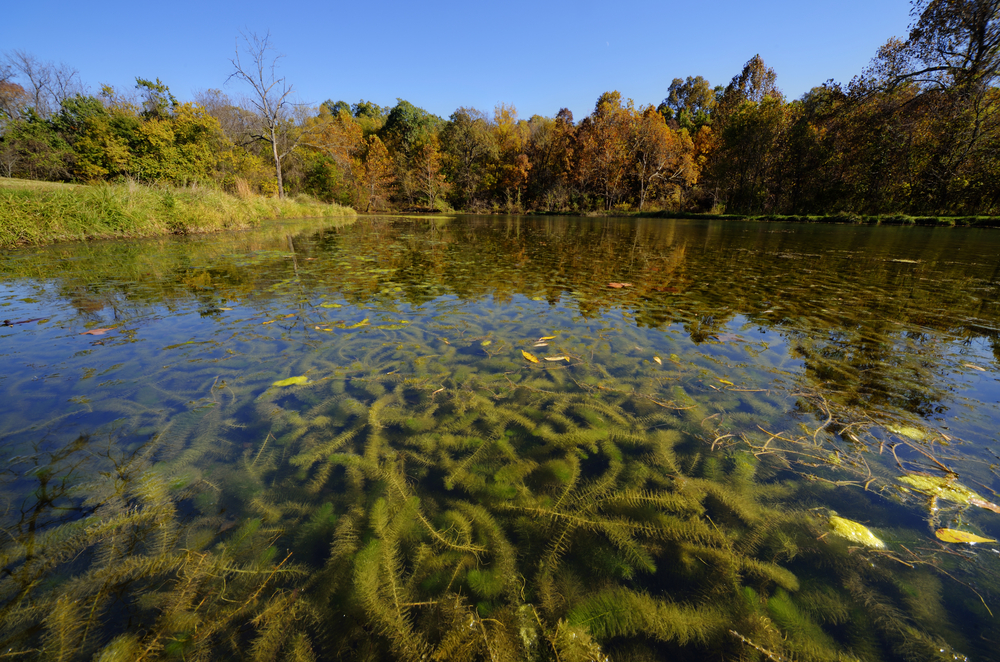
All lifeforms in an ecosystem are considered biotic resources. These lifeforms are directly dependent on abiotic elements for their reproduction, survival, and growth.
Turbidity (a fluid’s “haziness” or “cloudiness” comparable to smoke or haze in the air) is an abiotic element that has a major impact on aquatic ecosystems.
Submerged plants are less likely to grow in high levels of turbidity. This negatively impacts other species that depend on the submerged plants for shelter or food.
Further insight into abiotic factors
Abiotic factors, also known as abiotic components, are inanimate elements that impact the ecosystem. Although they can influence living organisms, these factors aren’t living.
The five classes of abiotic elements:
Atmosphere: These are important components of the atmosphere, which animals and plants need to breathe to survive.
They also combine these elements to make carbohydrates, other organic materials, and proteins.
Chemicals: Chemicals are a key component of the environment. They can influence the types of organisms that can thrive or grow in that area.
A large impact on plants in an area is the chemical composition. This includes pH. Acidic soils are a good example of this.
Azaleas, for instance, thrive in these conditions. Certain elements like copper and zinc are essential micronutrients in the development of many organisms.
Temperature: An increase in temperature can affect the development of an animal and can lead to changes in metabolism. All organisms can tolerate certain temperatures, but extreme temperatures can cause stress.
Water: More than 70% of the Earth’s land surface is covered by water in some form or another. Living organisms only require a very small amount of water to survive. Water is essential for survival.
Wind: A region’s temperature and humidity are affected by the wind’s direction and speed. High winds, especially in mountainous regions, can cause stunted growth. Wind can also carry seeds and aid in pollination.
Abiotic Component Examples:
- Elevation
- Humidity
- Latitude
- Pollution
- Radiation
- Rain
- Running water (rivers and streams)
- Salinity
- Salinized water (seas and oceans)
- Standing water (ponds and lakes)
- Temperature
- Wind
Ecosystems grouped by abiotic factors

Different environments emerge by looking at ecosystems as the grouping of abiotic factors.
Desert Abiotic Factors: Because of low rainfall, deserts can develop ecosystems that are distinct from other environments. Deserts cover 20% of the Earth’s surface, including Antarctica.
Deserts can often experience extreme temperature swings because of the stabilization of the temperature by open-air and water vapor.
Ocean Abiotic Factors: The following abiotic factors play a role in the ocean’s environment: salinity, heat, and pollution. Oceans are unique environments because of their depth.
Different zones receive different amounts of sunlight and heat. Each layer has its own ecosystem and its share of animals.
There are three types of ocean ecosystems: coral reef ecosystems, shoreline ecosystems, and deep-ocean ecosystems.
Tropical Rainforest Abiotic Factors: Tropical rainforests receive the highest rainfall of any place on earth. The majority of rainforests receive more than 100 inches of rainfall each year.
They are characterized by a warm and humid climate and a dense, lush, and complex ecosystem.
Tundra Abiotic Factors: The tundra receives less heat and light from the sun. It can freeze for years. It is possible to see the subsoil, a deep layer of soil.
This region is home to only grasses and very few small plants.
Comparing biotic components side-by-side against abiotic factors
Below are some important distinctions between biotic components and abiotic factors.
By components:
Biotic: Ecosystems’ biotic components are living factors.
Abiotic: Abiotic components are inanimate factors.
By examples:
Biotic: bacteria, fungi, humans, plants, etc.
Abiotic: sunlight, air, water, etc.
By how they influence ecosystems:
Biotic: generally, the biotic category displays a pattern that shows biotics help form a cycle in an ecosystem by reproducing, building, and eventually destroying the cycle.
Biotics directly impact the ecosystem and the ecosystem’s life cycle.
Abiotic: generally, the abiotic category displays a pattern that shows abiotic elements help develop an ecosystem’s cycle in external terms.
For instance, sunlight is necessary for photosynthesis. They are also involved with biotic elements in one way or another. Indirectly, abiotic components affect both ecosystems and biotic life cycles.
By how easily factors adapt to external changes:
Biotic: biotic factors tend to easily adapt to external changes.
Abiotic: abiotic factors tend to be resistant to external changes. If abiotic factors adapt, those adaptations tend to take a considerable amount of time to complete.
By their origination:
Biotic: these factors originate from the biosphere.
Abiotic: these factors originate from the lithosphere, hydrosphere, and atmosphere.
High-level overview of abiotic and biotic factors
These can be divided into three main types:
Edaphic factors: edaphic is derived from “edaphos,” the Greek word for “floor”. The most common edaphic variables are soil, minerals, mountains, valleys, etc.
Topographic factors: these are large-scale abiotic areas like slopes, surfaces, and altitudes.
Climatic factors: these are abiotic climate factors. They can easily have a powerful impact on the biotic components.
Climatic factors include particles in the air, temperature, and light.
A high-level overview of biotic factors
There are three important biotic components:
- Consumers: biotics that depend on others to provide the food they need for their survival. Humans are consumers since they depend on plants and animals for their food. Of course, humans also depend on abiotic water, but since water is not biotic, it is not a producer.
- Decomposers: these creatures break down the remains of foods left by others. Decomposers in the animal kingdom are called detritivores.
- Producers: are organisms that produce their own food, such as plants.
Conclusion: Is water biotic or abiotic?
Abiotic (a-bio-tic, “not-life-like”) and biotic (bio-tic, “life-like”) are classes of things and beings distinguished by whether these things or beings fall into one of two categories: inanimate, or non-living, and animate, or living.
Water is inanimate. Since it is “not-life-like,” water is abiotic even though water is vital for all living things in virtually every ecosystem.

